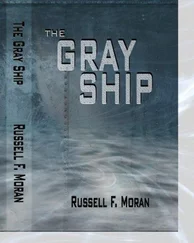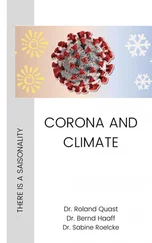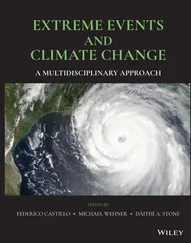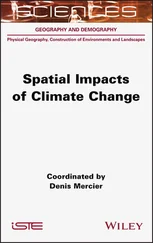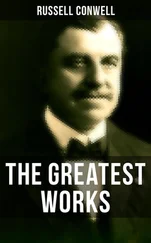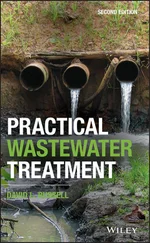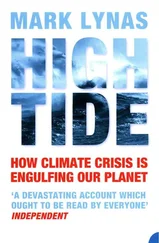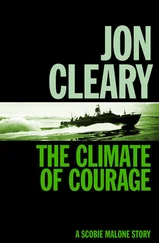“Good morning, Al, and thanks for having me on your show. What you said about the conditions for tornadic activity are true. Instability in the atmosphere—and God knows we’ve had a lot of that recently, combined with the powerful downdrafts or wind shear make us wary of what may happen.
“The Fujita Scale, used to determine the strength of a tornado, is like the Saffir-Simpson scale for measuring hurricane strength. The most extreme tornado was the Tri-State Tornado which touched down in parts of Missouri, Illinois, and Indiana in 1929. Although the scale wasn’t in existence at the time, scientists determined that the tornado had a strength of F5, the largest ever. Another F5 tornado was the Bridge Creek-Moore Tornado that hit Oklahoma in 1999. It clocked wind speeds of over 301 mph.”
“Mr. Williamson, what can you tell our viewers about how they can minimize the threat of a tornado?” Roker said.
“Once a tornado hits and you’re in the middle of it, the only thing you can do is pray. But there are two watchwords we always think about with tornados: vigilance and preparedness. If a tornado is heading your way, it’s too late to think how to get away. You should run for a below-ground shelter, such as a basement or a subway. Stay away from windows and keep your outdoor surroundings clear of objects that can turn into fast moving projectiles.”
“Do you see a possibility of a tornado hitting New York City, Mr. Williamson?”
“Tornados have hit New York, but the consequences were downed trees and damage caused by flying debris, nothing like the devastating twisters that have hit the Midwest.”
“Thank you for visiting with us,” Roker said. “I’m not sure I feel safer after listening to Mr. Williamson, but I do feel more prepared. Well, folks, be vigilant and be prepared to act. Al Roker, signing off from NBC News .”
The living quarters on Stargazer were suddenly bathed in an all-pervasive brightness.
“What the hell’s going on,” Nancy Mullin yelled, as she put her hand over her eyes. “I’ve never seen anything so bright.”
“Let’s check on the satellite solar panels to make sure one didn’t accidently deploy while facing us,” Bill Cranston said.
“Rosetta headquarters, Rosetta headquarters, this is Nancy Mullin on Stargazer .”
“This is Rosetta. Please hold, Nancy, while I get Phil Duncan,” said the radio operator. Strict orders were for Phil Duncan, and only Phil Duncan, to communicate with the crew of Stargazer .
“Go ahead, Nancy, this is Phil Duncan.”
“We’ve just been hit by the brightest light we’ve ever seen,” Nancy said. “Bill checked the solar panels on the satellites and nothing’s deployed, thank God. Wait a minute, Bill is showing me a video replay of earth a couple of minutes ago. Jesus, we need to wear sunglasses to look at it. There was an extremely bright light on the ground, which also covered a hell of a lot of sky, emanating from the western United States. It looked like it was around the Dakotas. The light started as a flash but then persisted for about a minute. We’re going to check of all our instruments to make sure nothing’s been compromised.”
“I’m starting with the satellite monitoring systems,” Cranston said. “Video feed, check; main panel power, check; fail-safe system down, but we already knew that; solar panel override switch, DOWN. Holy shit, we don’t dare run another solar panel test with the override down. Now I’m checking the onboard environmental systems. Main panel, check; lighting systems, check; video feeds, check; atmospheric control—DOWN. He looked at Nancy as she wiped perspiration off her forehead. It’s getting hot in here, Phil. I’m going to dress for a spacewalk to see if I can fix the atmospheric controller.”
Nancy Mullin helped Cranston into his space suit. Before she put his helmet on she leaned over to his ear.
“Be careful, baby. If you see something you don’t understand, don’t touch it.”
Cranston eased himself through the hatch leading to the airlock that opened into space. He floated up to the instrument panel on the outside of Stargazer and, after checking it for static electricity, removed the cover. His hunch proved correct—a burned out solenoid, possibly damaged by the gigantic flash of light. He replaced it and spoke to Nancy over the radio. “Flick the console on, Nance.”
“Perfect, Bill, you’re a genius. Now we’ll be able to play Scrabble later in comfort.”
Phil Duncan, who was listening in, laughed.
“While I’m out here, I’m going to check the transmitter on the satellite override switch.”
He moved himself 10 feet to the left and located the override switch cover. He opened it, expecting to find another malfunctioning solenoid. The solenoid was not damaged.
“Phil, if you’re listening, I expected to find a burned-out solenoid on the override switch. It’s in perfect shape. But having said that, what the hell could be causing the override problem? Dare we test the solar panels without knowing what the problem is?”
“No, Bill, we can’t take that chance,” Duncan said. “Great work, pal. Now get back inside or you’ll be late for your Scrabble game.”
July 28
“Good afternoon everyone, Martha McCallum reporting for Fox News . Unfortunately, I have a tragedy to report. NASA Flight 17, a DC-8 plane that was used to track weather, especially major storms like hurricanes, has crashed in South Dakota. We have heard a report from the NTSB that the plane experienced an extreme flash of intense light from the ground, and it lasted for about a minute. The plane lost all hydraulic controls, which made it almost impossible to fly. It’s unclear whether the flash of light had anything to do with the crash, but the loss of hydraulics came moments after the sudden light and therefore it’s under suspicion. I’m sad to report that the pilot and co-pilot lost their lives.
“In other news, the weather of course. The Department of Homeland Security has announced that it’s exploring every possible scenario that could have resulted in our insane weather. Richard Bellamy, Secretary of Homeland Security is on the line to bring us up to date.”
“Good afternoon, Mr. Secretary. I hope you’re going to tell us not to put our summer clothes away on this July day, not yet anyway. Please tell us what’s new.”
“Hello, Martha, and hello to your viewers. I wish I could give you more definitive news, but let me just say that the weather is now the major priority on the federal government’s list of urgent matters. We’re treating this weather as we would a war. Nothing is off the table, and we’ve assembled a team of scientists and engineers to help us.”
“Is there any truth to the rumor that the government thinks this event could have been intentional, in other words man-made?”
“As I said, Martha, nothing is off the table and we’re exploring every avenue. I know it sounds incredible that this weather could have been the result of a deliberate act, but let’s face it, the entire event is incredible.”
“Thank you for taking the time to talk to us, Mr. Secretary.”
“In other news…”
July 28
“Good morning everyone, Darryl Smith for NBC News . We’ve received word from the Office of Emergency Management and from the New York City mayor’s office, that major snow clearing has begun on this beautiful but still freezing July 28 th. The emergency local law against driving unless you have permission from the Office of Emergency Management is still in effect. Because the temperatures remain below freezing, despite the two-hour thaw a couple of days ago, the plows have a hard time finding places to drop the snow. Sanitation trucks and private construction vehicles have been enlisted to carry snow to the East and Hudson Rivers and drop it in the water.
Читать дальше


